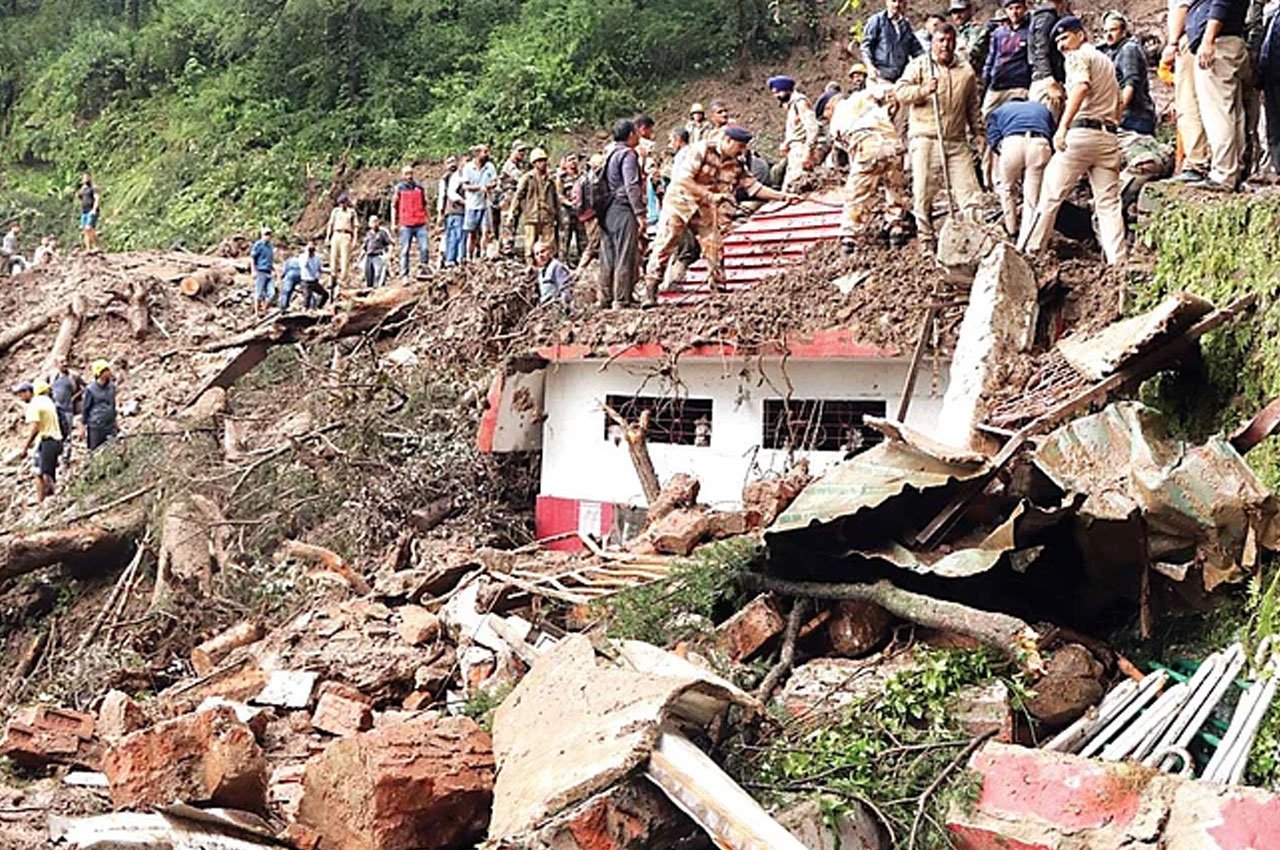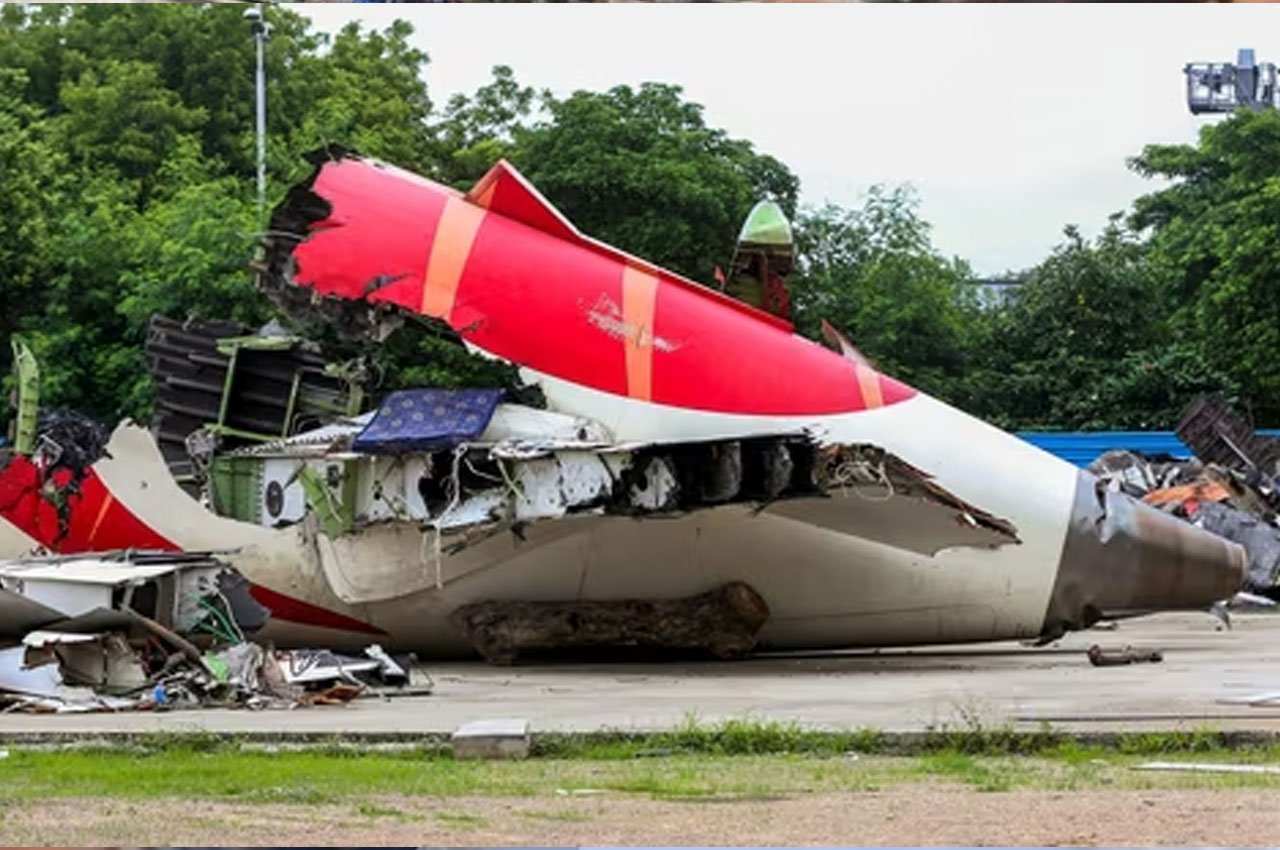The death of 72 people in Himachal Pradesh due to recent landslides and flash floods is more than a tragedy—it’s a grim reminder of the cost of reckless construction in India’s fragile hill states. Himachal and Uttarakhand, once known for their natural beauty and ecological balance, are today facing the brunt of unplanned urbanization, mindless deforestation, and unchecked tourism-driven development. As rain lashes the hills each monsoon, the mountains respond with fury—and rightly so.
What’s unfolding in Himachal is no longer a seasonal aberration; it is becoming an annual pattern. From roads being washed away and bridges collapsing to entire buildings crumbling in minutes, the Himalayan region is literally cracking under the pressure of human ambition. And Uttarakhand is no different.
A Fragile Region Under Relentless Pressure
The Himalayas are young, seismically active mountains. They were never meant to hold multi-storey hotels, widened highways, and massive hydropower projects dug into their core. Yet, in the name of development and connectivity, both Himachal Pradesh and Uttarakhand have seen rampant hill-cutting, river diversion, and over-construction without environmental assessment.
In Himachal, the recent devastation across Mandi, Kullu, and Shimla has exposed the systemic failure to respect the topography. Hotels, homes, and even places of worship built on unstable slopes gave way after days of intense rainfall. In Uttarakhand, towns like Joshimath and Nainital are already witnessing slow subsidence and frequent landslides—direct results of human interference in ecologically sensitive zones.
The disasters are not caused by nature. They are triggered by it—but constructed by us.
When Tourism Turns Toxic
Both states rely heavily on tourism. Over the past decade, lakhs of tourists throng to hill stations every summer, pushing the demand for better infrastructure. But in the rush to capitalize on this economic opportunity, towns have been allowed to grow vertically and horizontally—often without regard for carrying capacity, drainage systems, or slope stability.
Entire mountainsides have been cleared to make way for hotels and guest houses. Rivers have been encroached upon. Trees have been felled to widen roads. Ironically, development meant to make these areas safer and more attractive is now directly contributing to their collapse.
Climate Change Is Accelerating the Damage
Adding to the damage is the impact of climate change. The monsoon is no longer predictable. Intense cloudbursts, high-intensity rainfall in short periods, and erratic weather patterns have become frequent. The hills, stripped of natural buffers like forests, can no longer soak or channel these deluges safely.
Glacier melt is also contributing to rising river levels and flash floods. In both Himachal and Uttarakhand, the changing climate has made the terrain even more vulnerable. But while the warning signs are clear, the response has been muted or misdirected.
Ignored Warnings, Forgotten Lessons
From the Kedarnath disaster in 2013 to the Chamoli flash flood in 2021, Uttarakhand has seen repeated catastrophes. Himachal too has faced landslide-related deaths every monsoon. Expert committees, geologists, and environmentalists have repeatedly cautioned against over-construction in the hills, but few recommendations have been implemented.
What’s worse, instead of learning from each disaster, we seem to be normalizing them—accepting annual death tolls and property losses as the price of progress.
A Sustainable Path Still Exists
There is still time to pull back from the edge, but it demands more than just statements of intent. Construction in landslide-prone zones must be halted immediately, with comprehensive geological assessments guiding all future development. Building codes need to be strictly enforced, and geological clearances must become non-negotiable rather than procedural formalities.
Equally important is the restoration of the ecological balance. Large-scale, scientific reforestation programs are essential to stabilize the hillsides and restore natural drainage systems. The unchecked flow of tourism must be regulated through permits and eco-sensitive zoning that respects the carrying capacity of each town and valley.
And above all, the infrastructure that is built must be resilient—not just cosmetically appealing. Flyovers and widened highways mean little if they collapse every monsoon. We must replace the race for vanity projects with a long-term vision rooted in safety, sustainability, and science.
A Wake-Up Call We Can’t Afford to Snooze
The 72 deaths in Himachal this year should not be dismissed as a natural disaster. They must be seen for what they are—a wake-up call. If the governments of Himachal Pradesh and Uttarakhand do not act decisively now, the hills may continue to bleed every monsoon. And the cost will no longer be just financial—it will be paid in lives, heritage, and a rapidly vanishing ecosystem.
Let us remember: when we build against nature, nature always strikes back.
Photo Credit: National Herald India
For more opinions click here
Follow us for latest updates:




